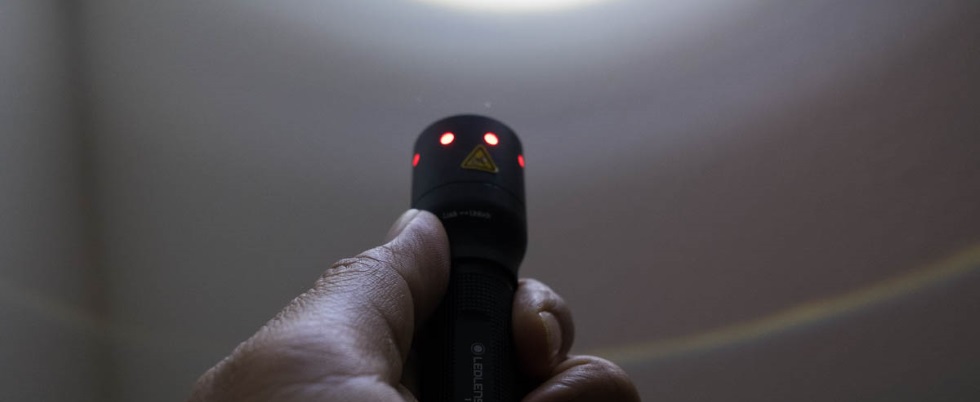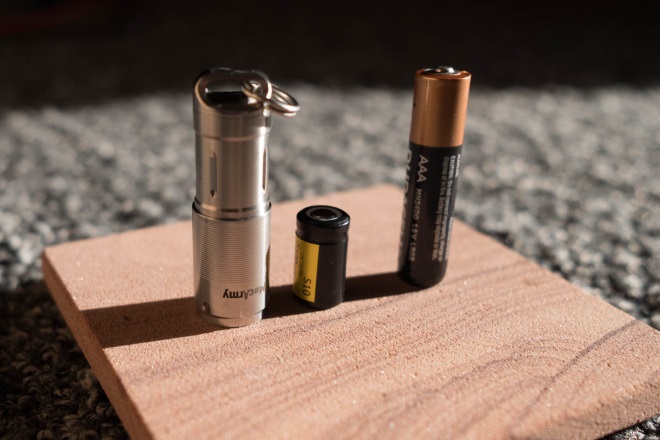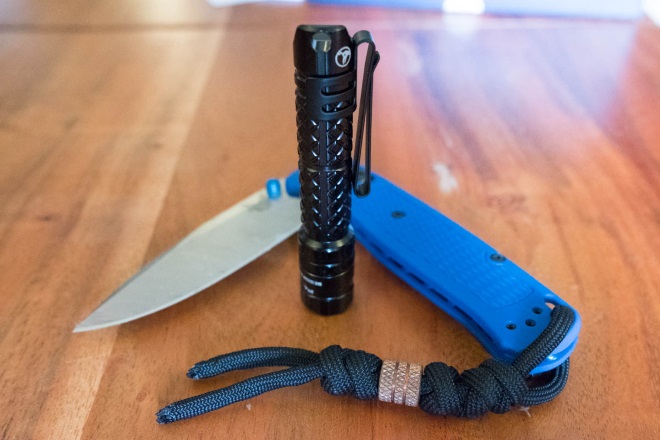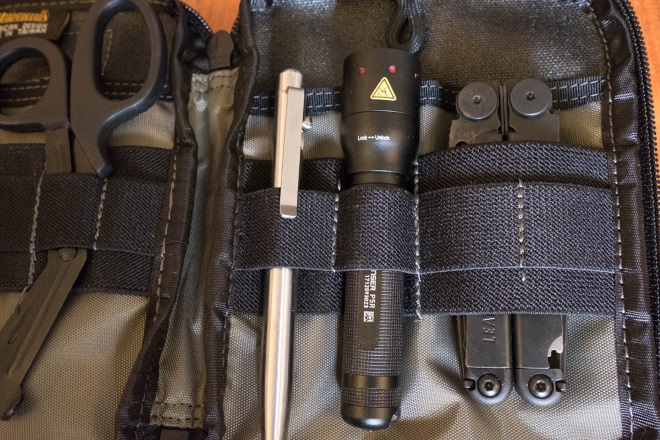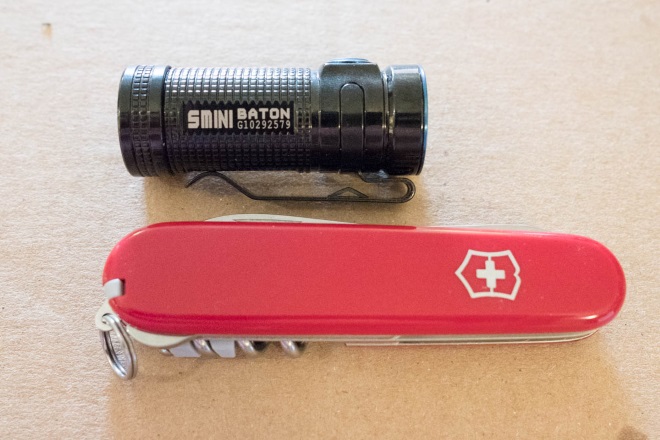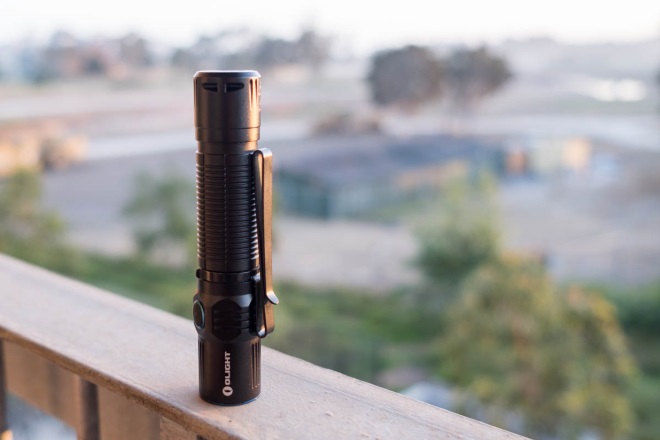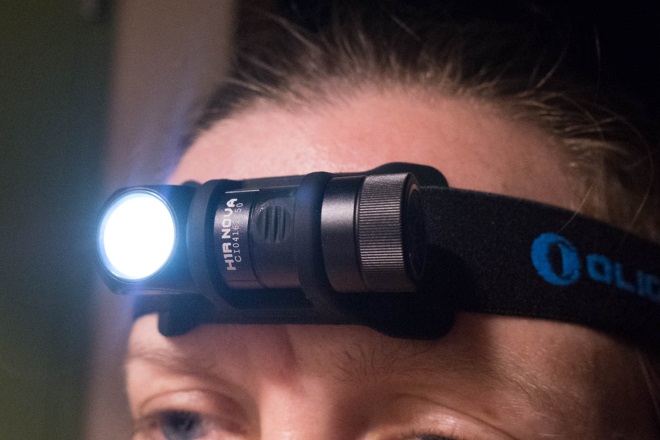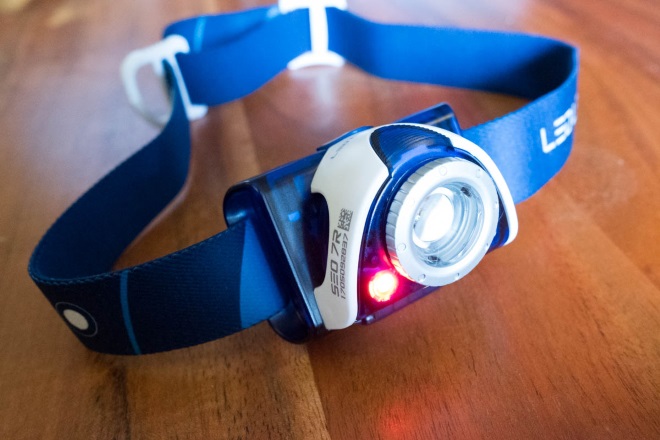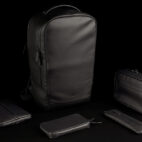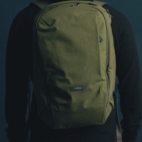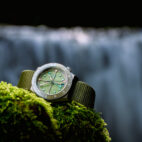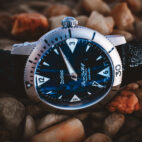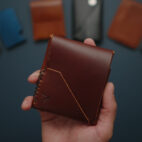Our Favorite EDC Flashlights
Everyone needs a light in their life. For the classic tri-EDC combo (write, slice, light), I probably use some form of flashlight just as much as I use a pocket knife and definitely more than a pen (even though I usually carry all three). And the enthusiast flashlight industry has changed so much since I started collecting them in 2003. In addition to a proliferation of custom makers, there’s also a small number of companies making ‘prosumer’ level lights with flawless machining, high output, and attractive pricing. Like many EDC items, flashlights can be very subjective.
The list below is tailored to my tastes but I’d expect most readers to find a common ground. I prefer smaller and lighter lights over larger ones. I don’t care too much about output because my use cases are more practical (finding something in a cupboard or something I dropped behind a desk), rather than tactical (searching for an animal, or suspect). Besides, you would be surprised at the output of modern flashlights, even ones for $30. This is not your father’s Maglite! What I am concerned about is beam quality and, in particular, color. I am a big fan of lights with a high CRI (color rendering index) measurement, which basically means objects lit up by the lights are represented accurately. When possible, I will always choose a high CRI light and prefer a color temperature of around 4000 to 5000K.
Keychain Lights
These lights should be your bread and butter. They are specifically designed to fit on your keychain so there’s no chance you are forgetting them at home. I have carried a keychain light in some form for a decade now and I am always glad I have one with me when the need arises. I used to be happy with AAA lights putting out 30 lumens but since lithium battery and LED technology has advanced so much I’ve switched to other form factors.
Nitecore TIP CRI
I carried the previous version for over a year, but when Nitecore released the CRI version, I had to get it. Plus, my last version was a Nitecore Christmas special in a super hero red and blue colorway; not that stealth. While you lose some output compared to the normal version, 240 lumens is nothing to scoff at. Its 90CRI Nichia emitter puts out some really nice neutral light and it recharges via micro USB, so no finicky cells to worry about. If I had one gripe about it, it would be that Nitecore decided to change the UI settings from last year. You don’t get a lockout now which is really important when you are pocket carrying. The TIP CRI has four modes including turbo and some convenience features like auto shutdown. Lastly, it weighs just over three-quarters of an ounce! If you’re looking for something even lighter, check out Nitecore’s last release, the Tube. It has a much lower output but depending on your needs, it may be enough. $35
Pros:
- – Very bright
- – Great color rendering
- – Compact and lightweight
Cons:
- – The better user interface was last year’s model
MecArmy Illumine X2S
MecArmy is quickly becoming one of my favorite flashlight companies because they make some of the strangest products. They are not afraid to experiment or stand on their own with their funky designs. In this case, their X2S isn’t unique but it is a little different because of the cell used. The X2S is a compact light that fits easily on your keychain. It’s just 1.7″ long and weighs 22.5g in the stainless version I was sent. Be careful though – since the shape is that of a typical flashlight, but so tiny, you’ll assume that it’s lighter than it really is. I was ready to replace the TIP on my keychain but then I learned they are nearly identical in weight! So, definitely a good keychain light, but not significantly lighter than other choices necessarily. It also comes in an aluminum finish (lighter), as well as PVD coated stainless and titanium.
The cool thing about this light is it uses a 10180 cell which is also known as a 1/3 AAA. Not only is it tiny, it’s also a lithium cell with high voltage and high capacity. Since not many people have chargers that can handle it, the X2S has a built-in charger that you use by exposing the micro USB port. Genius! The light puts out an impressive 130 lumens using the Cree XP-G emitter. The only con I could think of is it only has one mode and only lasts about 33 minutes. If it had a lower output, you’d have a longer runtime. However, since it’s a keychain light, you probably only need to use it for short periods anyway. My only small gripe about the light is since it’s a two stage twisty operation, you have to be sure to loosen the head sufficiently (I’d recommend at least a half extra turn) to ensure you don’t accidentally trigger it with pressure. $30
Pros:
- – Extremely compact
- – Built-in charger
Cons:
- – Can accidentally turn on
AAA Lights
These tiny lights are the perfect diameter and length to still carry on a keychain or perhaps in a small EDC pouch. Fitted with a rechargeable battery means a long shelf life and no worries about leaking. Technology has advanced quite a bit so you can expect better output than your dad’s Maglite Solitaire. I would recommend attaching the smallest snapring you can to the end for maximum portability.
Peak Eiger
Peak LED Solutions is a bit of an odd duck in the flashlight world. They have been around for a long time, predating many of the popular brands today. They don’t seem very interested in keeping up with advances, but instead prefer to march to their own drum. That is not to say they don’t make some really interesting lights. The Eiger is their flashlight AAA light and you’ll pay a premium for it. The version I have has a Luxeon Rebel LED and puts out 26 lumens. I know, but I swear that was really impressive back then.
Luckily, Peak has been updating some things and the latest Eiger puts out 81-114 lumens depending on the emitter you choose. Peak has really pimped out their Eiger line too; you can get it in three different tail configurations and a number of finishes, plus limited edition versions that have higher output or longer throw. It takes the standard alkaline, NiMH, and lithium AAA batteries, but also a Li-Ion rechargeable 10440! Talk about options! Besides the versatility, the best part about the Eiger is the Quantum Tunneling Composite (QTC) Technology for variable light output. This allows you to brighten and dim the output to match your task. In my opinion, the only thing that would make me hesitant to purchase one is there is very little to no communication or after-purchase support. Peak is very unusual in how they run their business. Luckily their lights are bombproof, so you’ll probably not need to go back. $50
Pros:
- – Bombproof construction
- – Lots of options: tail caps, materials, emitter type and temperature
Cons:
- – Pricey
- – Hard to reach customer service
PK Design Lab PL2
If you have a discussion about modern flashlights, you cannot help but hear the name Paul Kim. Paul was the VP of Engineering at Surefire for 19 years, before departing. Rumor has it he is creating lights for tactical and armed forces applications, under the moniker PK Design Lab. However, some of his designs have reached the civilian market and the PL2 is one of them. This is a gem of a light. It’s a PVD coated AAA light with a 110-lumen high. A simple twist of the head brings you to a 12-lumen low. Honestly, in this type of application, two modes that are nicely spaced out like this is perfect. It weighs just 0.9 oz and is a little over 3 inches long.
You can only purchase it from one location – a little corner of the internet called Milepost 28 which is run by a super nice guy named Mike. Ask Mike about Paul Kim and the PKDL and he’ll chat your ear off. Despite being a great keychain light, I have one minor niggle – the pocket clip is terrible. It doesn’t stay secure on the light so it slides up and down the tube and this is not something you want a clip to do when you’re using it. $36
Pros:
- – Simple UI with nicely spaced modes
- – Great build quality
Cons:
- – Terrible pocket clip
- – Not sure who to turn to if you have a problem
AA Lights
We’re starting to get up in size now. We are all pretty familiar with the size of a typical AA light. Perhaps some of you may have owned a Mini Maglite which stacks two AA batteries end to end for a fairly compact package. I like the diameter of this cell because it makes for lights that are comfortable to hold.
Ledlenser P5R
Along with Surefire and Maglite, I’d consider the Ledlenser one of the stalwarts of the industry. You might not think of them if you are looking for pure output or exotic finishes, but that doesn’t mean Ledlenser doesn’t innovate in their own way. When I received the P5R sample for testing, I was blown away. The packaging looks like it’s meant to be presented as a gift. The light itself is insanely light at just 2.65 oz and with a length of 4.65 inches, it’s almost an inch shorter than the M2R. I thought it was made of polymer plastic but it’s actually aluminum.
The P5R is a 14500-powered rechargeable flashlight. It uses an interesting magnetic charging base that you can either wall mount or can rest on a nightstand. The charging mechanism is magnetic but the cool part is it can attach to the end of a stand, which can be left on your workbench or wall-mounted. If you choose the latter option, Ledlenser instructs you to orient it charging port up, which means the light hovers in the air while charging! Despite its small size, it puts out 420 lumens out the front and lasts three hours on high.
Besides the charging, it sports some cool features. The first is a development from Ledlenser themselves. The Advance Focus System (AFS) combines an optic and reflector to get the best of both worlds. You get both long throw and wide flood. On high, it can reach 240 meters which is impressive considering some lights hit just 200 meters with 1000-1500 lumens. It also has a rapid focus system to adjust the output as well as the ability to quickly program the light on the fly. The only minor gripe I have about the P5R is the locking mechanism for the rapid focus head isn’t very secure; with a bit of effort, you can still adjust the beam when it’s locked. $110
Pros:
- – Lightweight but strong
- – Nice “floating” magnetic charger
- – Advance Focus System: the pros of a reflector and optic in one
Cons:
- – Focus lock not as secure as it could be
Single CR123 Lights
These small powerhouse cells completely changed the flashlight industry when they were introduced. Holding lots of power in a size slightly larger than CR2 batteries, CR123’s can also be stacked for a longer configuration.
Olight S1 Mini
This is one of the most popular single cell CR123/16340 lights and for good reason. It packs a whopping 550 lumens on turbo and can run at 300 lumens on high for two hours! It is 10% shorter in length than the S1 Baton and has an even higher output. The version I use is made of copper with a black finish and has a cool white XM-L2 emitter. It uses a TIR optic and is an extremely compact (about 2 inches long) and packable EDC flashlight that packs a punch for its weight (1.9 oz). My favorite part about it, besides the size, is how the light gradually ramps up and down when you turn it on and off. The ramping time is pretty quick but just enough to be noticeable and feels like it gives your eyes a chance to get used to the change in brightness. Lastly, it has a moonlight mode which is always a plus in my book. $50
Pros:
- – Unbelievably small
- – Extremely high output and great beam
- – Excellent feeling button and great ramping when powering on and off
Cons:
- – Can get hot really quick, then needs to step down
- – May be too small making it hard to hold comfortably
18650 Lights
When you need the runtime, 18650 is where it’s at. Lights using this battery are an ideal length for gripping, though I personally prefer something between the size of the 18650 and CR123 in length.
Olight M2R Warrior
I couldn’t believe it when I opened the M2R that Olight sent over for testing. The light outputs 1500 lumens on turbo before dropping down to 700 on high, which it can sustain for 1.5 hours. The construction is amazing, with subtle details from the lightly crenelated bezel to the teardrop milling near the tailcap. The M2R Warrior is a rechargeable dual switch tactical flashlight. It comes standard with an 18650 (3500 mAh) battery but it also has built-in recharging. Rather than use a standard USB cable which necessitates a port that adds a certain complexity to the light, Olight opted to go with a magnetic tailcap. The switch has an outside ring and inside portion which mates to the included USB magnetic charging cable. The cable always snaps into place so there’s no need to jiggle or reseat any connectors.
Speaking of switches, there are two on this light which makes it ideal for those in law enforcement or the military. The tailcap switch is two stages, with programmability allowing the user to switch between behaviors such as constant on, turbo, or strobe. The side features an electronic microswitch covered in thin rubber boot, making the physical interface really a joy to use. The UI for the light is simple and consistent with other Olight flashlights and like others, features a simple lockout feature to prevent accidental power-ons. They even added a small red LED in the side switch to signify the light is in lockout mode. It comes with a dual-sided pocket clip which allows for head up or head down carry. Finally, at just over 5 inches long, I find it the perfect size to comfortably grip, even for my S/M hands. $100
Pros:
- – Extremely high build quality
- – Included magnetic charger
- – Great throw
- – Great ergonomics; feels great to hold
Cons:
- – May be on the expensive side for some
Headlamps
If you have ever thought that your favorite small flashlight would make a great headlamp if only the business end would turn 90 degrees, you’re in luck! Companies like Zebralight and Olight have done exactly that. For headlamps, I want things to be self-contained (so no extra battery pack to the side or back), very lightweight, and with an emphasis on longer runtime, at lower outputs. I want headlamps for close-up tasks and to light up a wide area in front of me and to my sides. I don’t need spotlight capabilities or throw.
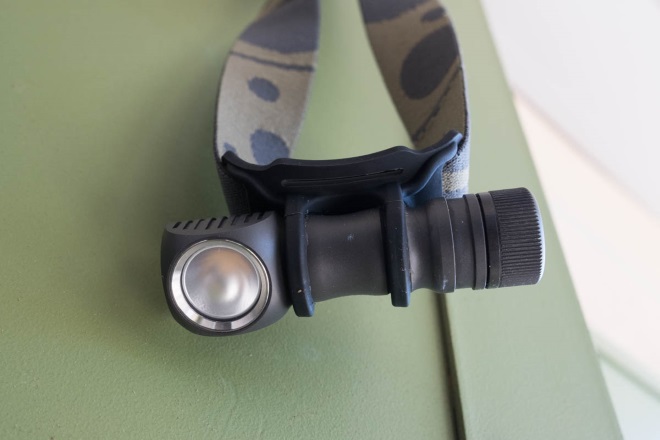
Zebralight H53Fc
Zebralight’s naming scheme is confusing as heck. I had to have a friend decipher and explain it to me. The model I ended up buying was the H (headlamp) 53 (AA battery and reflector) F (frosted lens) c (neutral emitter). Whew! With all that aside, this light rocks. It’s super lightweight and is really just a small AA flashlight with a right angle head. It’s longer than a AA battery, but not by much, at 2.9 inches. It outputs 276 lumens on high and can do three sub-lumen lows (or moonlight). For the power source, I already mentioned it takes AA sized cells but it’s very flexible in the type of chemistry – it can take alkaline, NiMH, or lithium. I would recommend the latter two especially if you plan on long-term storage (car, camping pack) because alkalines tend to leak. The headband itself is really simple and comfortable to wear and because the light is quite lightweight (2 oz), it doesn’t really weigh down the band or slip off your head, at all. $59
Pros:
- – Lightweight
- – Lots of models to choose from; pick your power source, CRI emitter, type of beam, etc.
Cons:
- – Sometimes difficult to find in stock
Olight H1R Nova
I originally asked for the H1 but that model is being discontinued so Olight generously sent me the H1R Nova to test. As you can imagine, the light is basically an S1 at a right angle and slightly larger. It measures 2.29 inches and weighs a mere 1.74 oz. It can hit a high of 500 lumens before dropping to a sustained output of 180 lumens for nearly three hours. It has four other modes of decreasing output and can run for 15 days at the lowest level (2 lumens). Just like the M2R Warrior, it recharges using the same convenient magnetic USB tailcap, but unlike the M2R, there is no tailcap switch. It comes with a pocket clip in case you want to wear it on your person, but it’s easily removable and the light can be converted to a headlamp easily. The included headband is wide and comfortable and the adjustment is intuitive. $67
Pros:
- – Like the S Mini in a headlamp config
- – Band is comfortable and holds the light in notches. A few options for placement.
Cons:
- – May be considered pricey for such a simple headlamp
Ledlenser SEO 7R
The SEO 7R is a totally different beast than the other Zebralight and Olight. While the former are simple headlamps not much larger than the cells that power them, the SEO 7R feels like a light with all the bells and whistles. First off, it looks more like a traditional headlamp instead of a barrel on a band. It’s powered by an included 3.7v Lithium Ion Pack but you have the option of using three off the shelf AAA batteries, for full flexibility. It puts out 220 lumens in the front and that lasts five hours. If you want to spend your time in low, you’ll have illumination for 20 hours. I really like what Ledlenser is doing here. It’s giving you more than enough light than you’ll likely need while balancing that with a long runtime. Given the option of much higher output, I think users will opt for that, not realizing it’s more than is needed to light the scene, and thus suffering from shorter battery life.
The SEO 7R has some really cool features that make it a rockin’ headlamp. First, it has a red secondary that is great for preserving night vision. In standard (white light) mode, the headlamp goes through four modes. First is always high, then low (more on that later), then OptiSense mode, then finally strobe. The first and last are self-explanatory, while the magic is the middle two modes. First, the low is not really a low. It’s a user-definable setting that is dead-simple to adjust. You simply hold the button and the light will ramp up, pause, then ramp down, pause, and repeat. You just let go when you hit the brightness you want. So, you can have your lamp setup with 100% then 15% or 100% and 50%; up to you. The third mode is called OptiSense which uses the optical light sensor in the SEO 7R to dynamically adjust output based on the surrounding environment. For example, you might be at 100% for a night hike but if you stop to take a look at a map, the light would be too intense as it reflects off the sheet and back to your eyes. OptiSense takes care of this by stepping down the brightness. In testing, it does it so quickly, yet smoothly, that it’s really hard to see the stepping. Killer stuff!
I do have a few gripes about the light though. They are minor and can be overcome but are slightly annoying initially. I didn’t mention this but the lamp has an adjustable focus that can easily be manipulated with one hand. It also has an angle adjustment with nine discrete settings. Both are great but the resistance is just so that it’s hard to manipulate them with fine precision, unless you use two hands; you need something to hold it steady and with enough back-resistance so you can use your other hand to finely tune it. Finally, I think the quick guide that Ledlenser includes with all their lights is extremely confusing and unusable. It uses cryptic symbols that make no sense unless you read the full manual first, then go back to decipher the quick start. My advice – always find the full-fledged owner’s guide for easy-to-understand English instructions. Despite these two niggles, the SEO 7R is the one I am packing for my next camping trip. $90
Pros:
- – OptiSense technology adjusts output based on conditions
- – Easy-to-use UI including a user-programmable setting
Cons:
- – Sometimes hard to adjust focus and angle of beam with just one hand
- – Quick start guide difficult to decipher; stick to the full users manual





 Carry Awards
Carry Awards Insights
Insights Liking
Liking Projects
Projects Interviews
Interviews
